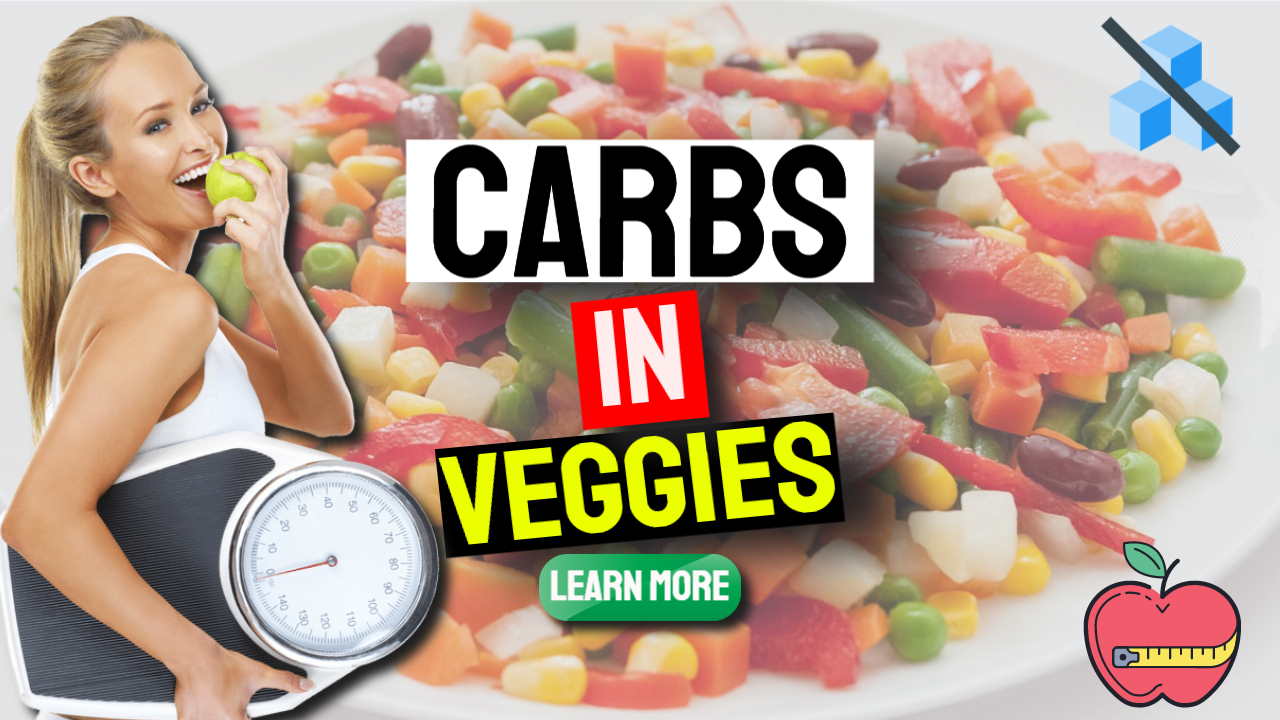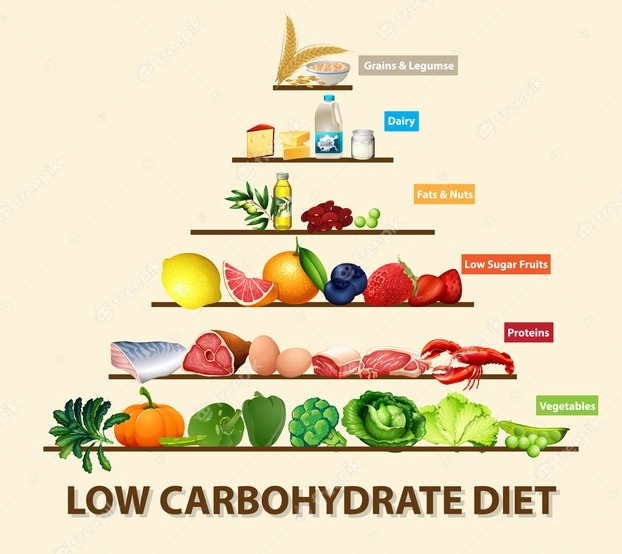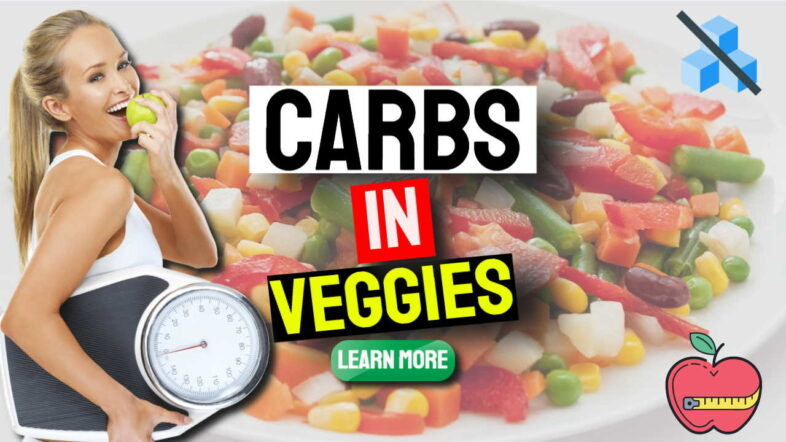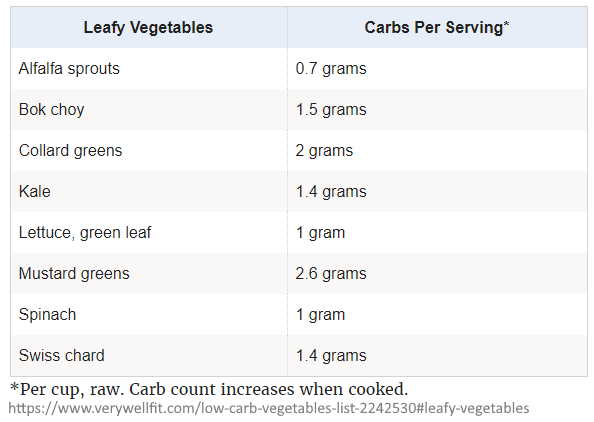All you need to know about carbs in veggies in order to maintain a low carbohydrate diet.
The Best Low-Carb Vegetables
In case you needed another reason to eat your vegetables, see our chart and list below. It demonstrates that the majority of your favourites are ridiculously low in carbs!
We're talking about super low carbs—like one net carb for three cups of spinach. That's low! This chart will be your bible if you're thinking about starting the Keto Diet or any other low-carb diet.
Here is a frequently asked question about low-carb vegetables:
- Question: What vegetables are low in carbs?
- Answer: Most leafy greens, such as spinach, cabbage, and kale, are low in carbs, as are the other foods listed in the chart below.
Are you like me? I'm seeking to understand as much as possible about the foods I eat in order to lose weight. I've been researching a slew of food facts as part of my quest to live a healthier life.
Today I'm going to share a list of low-carb vegetables and how many carbs they have.
We've included both the overall amount of carbohydrates and the weight of net carbs in the list of the lowest carb veggies.
When it relates to carbs in veggies, vegetables get a better report than fruits. They have less sugar and thus fewer carbs than fruits.
Vegetables ought to be a significant source of nutrition in your diet even if you are limiting carbs.
They have more fibre and fewer calories per portion than any other food group. They also contain a variety of beneficial compounds such as vitamins, phytochemicals, and minerals.
If you're going looking for low carb, our ultimate guide to carbs in vegetables will help you decide which vegetables to include in your diet.
Net carbs are the total carbohydrate value minus fibre.
When it comes to meal preparation, vegetables are unquestionably healthier (and a better choice). It should be noted, however, that the various kinds of vegetables have varying nutritional values.

Low Carb Veggies List
Leafy vegetables contain the fewest carbohydrates and have the least impact on blood sugar levels.
The carbs they do possess are mostly fibre, which digests slowly and keeps you full for a longer period of time. The list below shows the carbs per serving for 8 leafy vegetables:
Greens are an obvious choice when selecting carbs in veggies for salads. But they're also delicious in smoothies, wraps, and omelets. You can even make a low-carb sandwich or burger by replacing a slice of bread or roll with a lettuce leaf.
Vegetables are not all created equal. You'd never call a punnet of french fries a salad, would you? Sugar and starches are higher in vegetables that grow underground, such as potatoes, beets, sweet potatoes, carrots, and onions.
If you're trying to cut back on carbs, it's best to avoid or limit your intake of root vegetables. Here are some examples of high carbs in veggies:
- 1 medium white potato contains 31g net carbs,
- 1 medium white onion contains 8g net carbs, and
- 1 cup of carrots contains 10g net carbs.
Green onions are the low-carb choice. With green onions, a little goes a long way. This is great news because you can use them instead of white, yellow, and red onions, which are generally avoided on a keto diet due to their high carb count.
Green onions are a type of vegetable in the allium family. Allium vegetables have been used as a healing plant in traditional medicine all over the world, with particular emphasis on their benefits for heart health.
These Vegetables Have The Lowest Carb Counts
The low carbs in veggies (vegetables) list below will assist you in developing a solid foundation of knowledge to make educated meal planning and grocery shopping decisions.
We hope the list below of non-starchy vegetables will make the produce section of your supermarket a little less perplexing for you:
Alfalfa sprouts
Arugula
Artichoke
Asparagus
Bamboo shoots
Beans (green, Italian, yellow, or wax)
Bean sprouts
Beets
Bok choy
Broccoli
Brussels sprouts
Cabbage
Cauliflower
Celery
Chayote
Chicory
Chinese cabbage
Chinese spinach
Cucumber
Eggplant
Fennel
Garlic
Green onions
Greens (beet or collard greens, dandelion, kale, mustard, turnip)
Hearts of palm
Herbs (parsley, cilantro, basil, rosemary, thyme, etc.)
Jicama
Kohlrabi
Leeks
Lettuce (endive, escarole, romaine or iceberg)
Mushrooms
Okra
Onions
Parsley
Peppers (green, red, yellow, orange, jalapeño)
Purslane
Radishes
Rapini
Rhubarb
Rutabaga
Sauerkraut
Scallions
Shallots
Snow peas or pea pods
Spinach
Summer squash
Swiss chard
Tomatillos
Turnips
Water chestnuts
Watercress
Zucchini.
[Source: Wikipedia]
The Ultimate Guide To Carbs In Vegetables

Low carb veggie guides are available to buy online. The best of these provide net carbohydrate values per 100g.
For a dieter, we recommend that you purchase a low-carb veggie guide and keep it in the kitchen. Some are available as posters which can be fixed above a food preparation area.
An easy-to-use reference guide for determining where your carbs are coming from is indispensable. You may also wish to buy a comprehensive list of all zero-carb foods from which to choose how tasty low carbs in veggies.
There are simple carbs in veggies guides available that beginners enjoy looking at. They quickly tell them what to enjoy and what to avoid.
What about me? I have a big poster on my wall which I follow. And, now a couple of months into my low carb diet, I find I prefer a large serving of non-starchy vegetables to a small handful of nuts.
Can you eat as many vegetables as you like?
Because the Keto Diet and many others require control of carbs are based solely on macronutrient control. No food is completely off-limits. It all depends on the size of your portions and your overall intake.
Having said that, eating high-carb foods can make it difficult to stick to your nutrition goals.
The top foods to avoid or limit while on the Keto Diet include starchy vegetables such as:
- winter squash, and
- peas.
Despite the fact that many of these plants contain beneficial nutrients and dietary fibre they are a danger! The danger lies in their higher carb content which makes it easier to exceed your daily limit for ketosis when eating in normal quantities. So, watch your carbs in veggies closely!
If you look at the nutrition labels at your local market, you'll notice something. That something is that the majority of the carbohydrates in our diet come from plants such as fruits, vegetables, and grains.
Meat provides very few carbohydrates. This is due to the fact that animals do not produce their own carbohydrates. Instead, they get them from plants in their diet.
Low Carb Veggies are your Friend!
Vegetables are the answer when you need volume with the fewest calories!
Our list of calories in vegetables (above) will assist you in making the best choice to fill you up while consuming the fewest calories.
While I love tools and apps, sometimes having a list of foods with the calories next to them to print for your fridge door is all you need. Or, better yet, a wall poster.
Fiber, unlike starches and sugars, is not digested for energy. However, the two distinct types serve important functions.
- Insoluble fibre adds bulk to waste, allowing you to maintain a regular bowel movement.
- Soluble fibre lowers cholesterol while also absorbing just enough water. Enough to form a mass that makes you feel full.
Mixed Vegetables and Carbs in Veggies
If you eat 1 cup of mixed vegetables every day, you will get 8 grammes of fibre.
Women require 25 grammes of fibre per day and men require 38 grammes.
This serving of “mixed vegetables” provides 32% of women's and 21% of men's recommended daily intake.
What About Tomatoes?
Tomatoes are technically fruits, not vegetables – at least from a botanical standpoint.
Nonetheless, we tend to eat and cook them like vegetables. Thatis why they make it onto many lists of the best low-carb vegetables. However, we went along with others and left them off the list provided above. Tomatoes are just a little high in carbs for our liking.
That pattern holds true for a number of other items on the list, as you will see as you proceed. The avocado is technically a fruit. But it is also one of the most traditional “keto” foods.
Realistically, distinguishing between fruits, vegetables, and other groups can be difficult at best, especially given the variety of definitions available.
You can eat as many fibrous vegetables as you want (think asparagus, celery, and spinach).
Some vegetables, on the other hand, are particularly starchy and high in carbohydrates and should be avoided.
Continue reading to learn more about these high-carbohydrate vegetables from our experts.
Which vegetables are high carb?
Adding these high-carb vegetables to a meal will increase its carbohydrate content. If you want to follow a low carb veggies diet steer clear of the following vegetables:
- Corn is one of the highest carbohydrate sources of vegetables; one ear of corn contains approximately 32 grammes of carbohydrates.
- Starches are next on the list of things to avoid. All grains, potatoes, some beans, and starchy vegetables like carrots and beets fall into this category. To be clear, almost all foods contain carbohydrates, but some contain far more than others.
- It hardly needs saying that sugar, in all of its forms, is the main food to avoid when eating low-carb. That means you also need to avoid nearly all fruits.
A low-carb diet restricts carbohydrates like those found in grains, starchy vegetables, and fruit and emphasises foods high in protein and fat.
There are numerous types of low-carb diets. Each diet has different restrictions on the types and amounts of carbohydrates that can be consumed.
Examples of Carbs in Veggies – Bok Choy Cabbage
There are about 3. 1 g total carbs (1. 4 g net carbs) per cup of bok choy so it is an excellent low-carb veggie to eat.
Bok choy, also known as Chinese cabbage, is a nutritious leafy green vegetable.
A cup contains a lot of vitamins A, C, and K, as well as calcium, iron, potassium, and manganese. It's also a water-rich vegetable with only 12 calories per cup.
Bok choy is a popular vegetable in Asian cuisine.
Examples of Carbs in Veggies – Cauliflower and Spinach
Cauliflower is a low carb vegetable choice. At 4g net carbs per 100g you can stay really low-carb. Skip the lettuce and grab some cauliflower or spinach.
Other dark leafy greens like kale, arugula, and mizuna are also lower in carbs than lettuce. And, besides, these dark greens are rich in iron and potassium.
Other examples of low carb veggies we found are:
- Alfalfa sprouts- 0 g net carbs per 100
- Celery-1. 4 g net carbs per 100g (1 cup chopped: 1.
- Endive- 0. 2 g net carbs per 100g (one whole head, 513 ounces: 2 g net carbs)
- Romaine lettuce-1. 2 g net carbs per 100g (3. 5 ounces: 1. 3 net carbs)
Food vector created by brgfx – www.freepik.com





